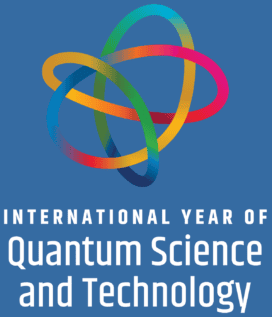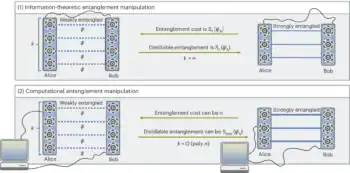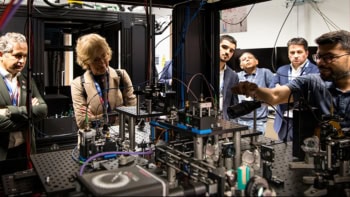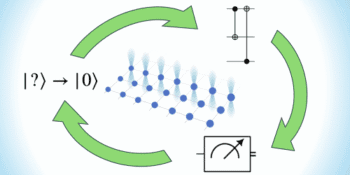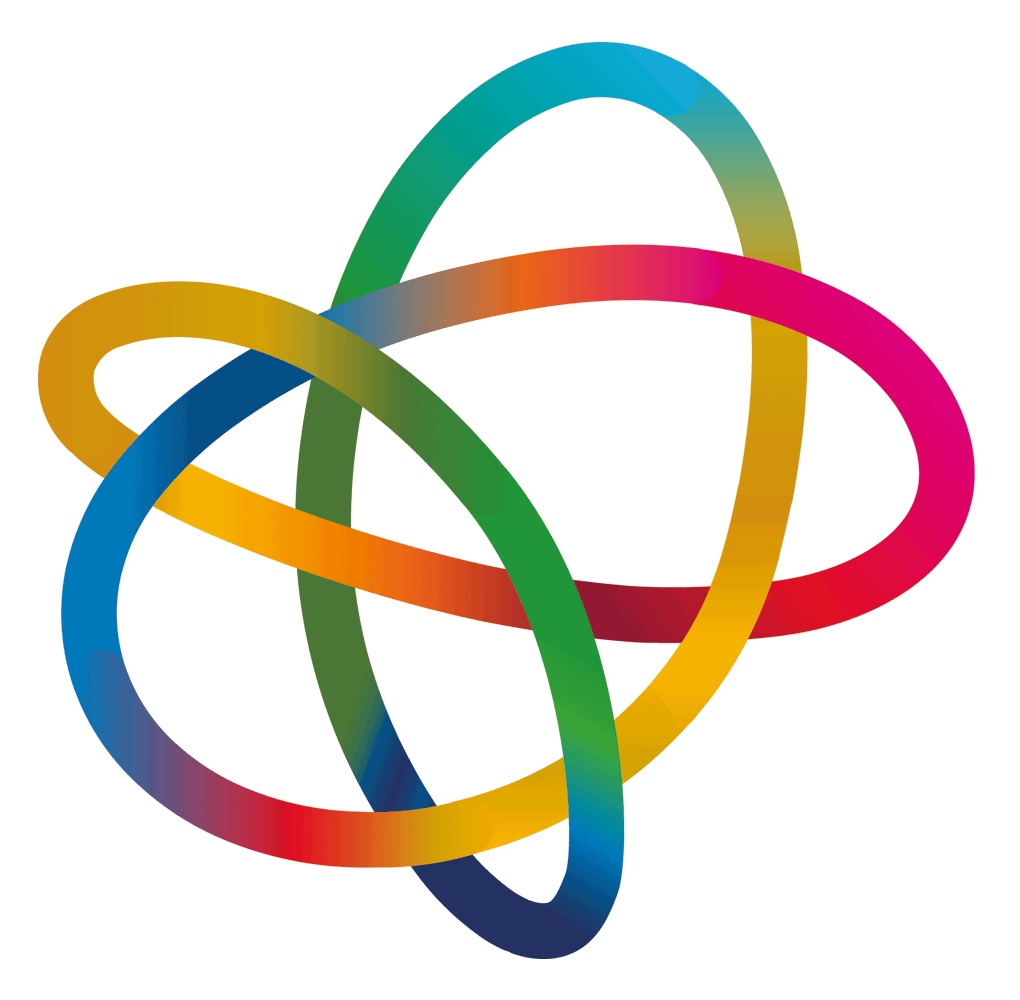
Part of our International Year of Quantum Science and Technology coverage
In the fourth of our series of truly weird quantum effects, Hamish Johnston becomes a casual observer of the bizarre situation in which the causal order of events are in a quantum superposition

The concept of cause and effect plays an important role in both our everyday lives, and in physics. If you set a ball down in front of a window and kick it hard, a split-second later the ball will hit the window and smash it. What we don’t observe is a world where the window smashes on its own, thereby causing the ball to be kicked – that would seem rather nonsensical. In other words, kick before smash, and smash before kick, are two different physical processes each having a unique and definite causal order.
But, does definite causal order also reign supreme in the quantum world, where concepts like position and time can be fuzzy? Most physicists are happy to accept the paradox of Schrödinger’s cat – a thought experiment in which a cat hidden in a box is simultaneously dead and alive at the same time, until you open the box to check. Schrödinger’s cat illustrates the quantum concept of “superposition”, whereby a system can be in two or more states at the same time. It is only when a measurement is made (by opening the box), does the system collapse into one of its possible states.
But could two (or more) causally distinct processes occur at the same time in the quantum world? The answer, perhaps shockingly, is yes and this paradoxical phenomenon is called indefinite causal order (ICO).
Stellar superpositions and the order of time
It turns out that different causal processes can also exist in a superposition. One example is a thought experiment called the “gravitational quantum switch”, which was proposed in 2019 by Magdalena Zych of the University of Queensland and colleagues (Nat. Comms 10 3772). This features our favourite quantum observers Alice and Bob, who are in the vicinity of a very large mass, such as a star. Alice and Bob both have initially synchronized clocks and in the quantum world, these clocks would continue to run at identical rates. However, Einstein’s general theory of relativity dictates that the flow of time is influenced by the distribution of matter in the vicinity of Alice and Bob. This means that if Alice is closer to the star than Bob, then her clock will run slower than Bob’s, and vice versa.
Like with Schrödinger’s cat, quantum mechanics allows the star to be in a superposition of spatial states; meaning that in one state Alice is closer to the star than Bob, and in the other Bob is closer to the star than Alice. In other words, this is a superposition of a state in which Alice’s clock runs slower than Bob’s, and a state in which Bob’s clock runs slower than Alice’s.
Alice and Bob are both told they will receive a message at a specific time (say noon) and that they would then pass that message on to the their counterpart. If Alice’s clock is running faster than Bob’s then she will receive the message first, and then pass it on to Bob, and vice versa. This superposition of Alice to Bob with Bob to Alice is an example of indefinite causal order.
Now, you might be thinking “so what” because this seems to be a trivial example. But it becomes more interesting if you replace the message with a quantum particle like a photon; and have Alice and Bob perform different operations on that photon. If the two operations do not commute – such as rotations of the photon polarization in the X and Z planes – then the order in which the operations are done will affect the outcome.
As a result, this “gravitational quantum switch” is a superposition of two different causal processes with two different outcomes. This means that Alice and Bob could do more exotic operations on the photon, such as “measure-and-reprepare” operations (where a quantum system is first measured, and then, based on the measurement outcome, a new quantum state is prepared). In this case Alice measures the quantum state of the received photon and prepares a photon that she sends to Bob (or vice versa).
Much like Schrödinger’s cat, a gravitational quantum switch cannot currently be realized in the lab. But, never say never. Physicists have been able to create experimental analogues of some thought experiments, so who knows what the future will bring. Indeed, a gravitational quantum switch could provide important information regarding a quantum description of gravity – something that has eluded physicists ever since quantum mechanics and general relativity were being developed in the early 20th century.
Switches and superpositions
Moving on to more practical ICO experiments, physicists have already built and tested light-based quantum switches in the lab. Instead of having the position of the star determining whether Alice or Bob go first, the causal order is determined by a two-level quantum state – which can have a value of 0 or 1. If this control state is 0, then Alice goes first and if the control state is 1, then Bob goes first. Crucially, when the control state is in a superposition of 0 and 1 the system shows indefinite causal order (see figure 1).
1 Simultaneous paths
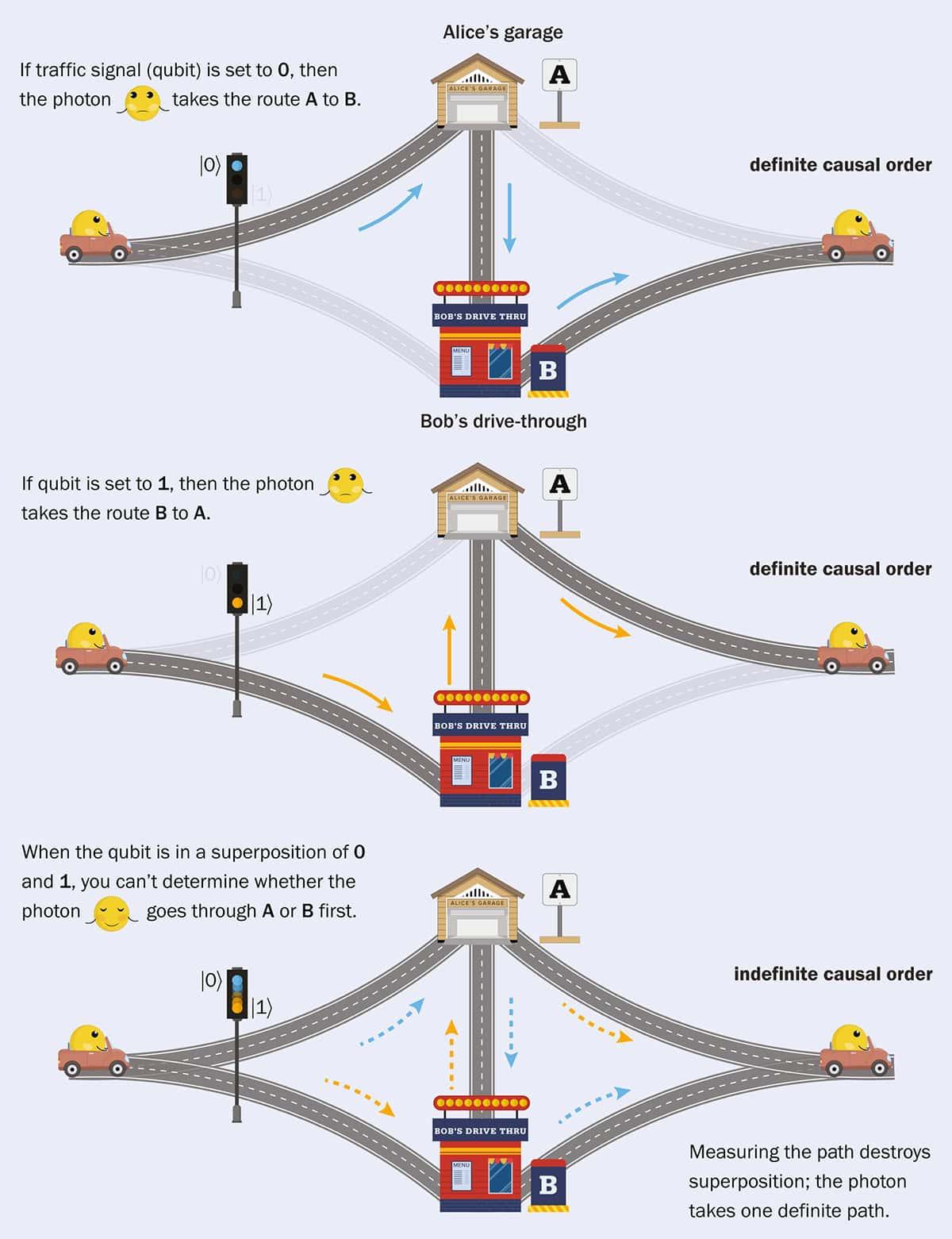
In this illustration of a quantum switch a photon (driving a car) can follow two different paths, each with a different causal order. One path (top) leads to Alice’s garage followed by a visit to Bob’s drive thru. The second path (middle) visits Bob first, and then Alice. The path taken by the photon is determined by a control qubit that is represented by a traffic light. If the value of the qubit is “0” then the photon visits Alice First; if the qubit is “1” then the photon visits Bob first. Both of these scenarios have definite causal order.
However, the control qubit can exist in a quantum superposition of “0” and “1” (bottom). In this superposition, the path followed by the photon – and therefore the temporal order in which it visits Alice and Bob – is not defined. This is an example of indefinite causal order. Of course, any attempt to identify exactly which path the photon goes through initially will destroy the superposition (and therefore the ICO) and the photon will take only one definite path.
The first such quantum switch was created by in 2015 by Lorenzo Procopio (now at Germany’s University of Paderborn) and colleagues at the Vienna Center for Quantum Science and Technology (Nat. Comms 6, 7913). Their quantum switch involves firing a photon at a beam splitter, which puts the photon into a superposition of a photon that has travelled straight through the splitter (state 0) and a photon that has been deflected by 90 degrees (state 1). This spatial superposition is the control state of the quantum switch, playing the role of the star in the gravitational quantum switch.
State 0 photons first travel to an Alice apparatus where a polarization rotation is done in a specific direction (say X). Then the photons are sent to a Bob apparatus where a non-commuting rotation (say Z) is done. Conversely, the photons that travel along the state 1 path encounter Bob before Alice.
Finally, the state 0 and state 1 paths are recombined at a second beamsplitter, which is monitored by two photon-detectors. Because Alice-then-Bob has a different effect on a photon than does Bob-then-Alice, interference can occur between recombined photons. This interference is studied by systematically changing certain aspects of the experiment. For example, by changing Alice’s direction of rotation or the polarization of the incoming photons.
In 2017 quantum-information researcher Giulia Rubino, then at the Vienna Center for Quantum Science and Technology, teamed up with Procopia and colleagues to verify ICO in their quantum switch using a “causal witness” (Sci. Adv. 3 e1602589). This involves doing a specific set of experiments on the quantum switch and calculating a mathematical entity (the causal witness) that reveals whether a system has definite or indefinite causal order. Sure enough, this test revealed that their system does indeed have ICO. Since then, physicists working in several independent labs have successfully created their own quantum switches.
Computational speed up?
While this effect might still seem somewhat obscure, in 2019, an international team led by the renowned Chinese physicist Jian-Wei Pan showed that a quantum switch can be very useful for doing computations that are distributed between two parties (Phys. Rev. Lett. 122 120504). In such a scenario a string of data is received and then processed by Alice, who then passes the results on to Bob for further processing. In an experiment using photons, they showed that ICO delivers an exponential speed-up of the rate at which longer strings are processed – compared to a system with no ICO.
Physicists are also exploring if ICO could be used to enhance quantum metrology. Indeed, recent calculations by Oxford University’s Giulio Chiribella and colleagues suggest that it could lead to a significant increase in precision when compared to techniques that involve states with definite causal order (Phys. Rev. Lett. 124 190503).

The quantum Zeno effect: how the ‘measurement problem’ went from philosophers’ paradox to physicists’ toolbox
While other applications could be possible, it is often difficult to work out whether ICO offers the best solution to a specific problem. For example, physicists had thought a quantum switch offered an advantage when it comes to communicating along a noisy channel, but it turns out that some configurations of Alice and Bob with definite causal order were just as good as an ICO.
Beyond the quantum switch, there are other types of circuits that would display ICO. These include “quantum circuits with quantum control of causal order”, which have yet to be implemented in the lab because of their complexity.
But despite the challenges in creating ICO systems and proving that they outperform other solutions, it looks like ICO is set to join ranks of other weird phenomena such as superposition and entanglement that have found practical applications in quantum technologies.
This article forms part of Physics World‘s contribution to the 2025 International Year of Quantum Science and Technology (IYQ), which aims to raise global awareness of quantum physics and its applications.
Stayed tuned to Physics World and our international partners throughout the year for more coverage of the IYQ.
Find out more on our quantum channel.
